
Written By:
Samantha Rivera
One of the most effective student recruitment tools at your disposal is email marketing. If used properly, it allows for personalized communication that engages students and attracts them to your institution.
In this article, you'll learn:
- The importance of email marketing for higher education
- Six best practices for email marketing in higher education
- How HubSpot can benefit your email marketing endeavors
The Importance of Email Marketing for Higher Education
Educational institutions hoping to capture prospective students' attention should make email outreach a main component of their enrollment marketing plan. It's one of the best performing channels for communicating with prospective and current students, and its success isn't going away any time soon.
According to HubSpot, 77% of marketers saw increased engagement with email in 2022, and the number of people who use it on a daily basis is expected to increase from 4 billion to 4.6 billion by 2025. Much of this usage is from the Gen Z population, who make up a majority of current and prospective college students. According to Statista, 94% of individuals between the ages of 9 and 24 rely on email as a means of communication.
Effective email marketing can result in several key benefits for colleges and universities. It allows you to:
- Build relationships with students: Email is an easy way to engage with current and prospective students. It provides a seamless channel for inquiries to ask questions and connect with faculty.
- Increase brand awareness: Email marketing can help you set yourself apart from your competitors and increase awareness of your institution.
- Promote content: Email is an effective way to share relevant content with students, such as informational blog posts or videos highlighting campus culture.
- Generate new leads: Due to email’s wide reach, it can be used to connect with prospective students who might not have been aware of your institution or programs before.
- Nurture leads: Once students have entered your admissions funnel, email can guide them through the process—all the way to matriculation.
- Increase student enrollment and retention: In addition to engaging prospective students, email can keep your current students involved in the community.
In order to reap the potential benefits of email marketing, it's important to ensure you're using it properly. Below are six best practices for email marketing in higher education.
6 Best Practices for Email Marketing in Higher Education
1. Choose the Right Email Marketing Service
When it comes to email marketing for higher education, choosing the right service can provide you with the tools needed to build effective emails. They offer valuable functionality such as:
- Marketing automation
- Easily accessible analytics
- Downloadable reports
- A/B testing capabilities
- List segmentation
Before you commit to an email marketing platform, it's important to ensure you've thoroughly researched each option and understand your marketing needs. For example, factors such as app integrations, mobile-friendliness, email templates, and automation tools are all important to take into consideration before choosing a service provider.
Some of the most commonly used email marketing platforms include: - HubSpot
- Mailchimp
- ActiveCampaign
- Marketo
At Pepperland, we recommend HubSpot for its usability, thorough contact management, drag-and-drop email templates, and automation capabilities. In addition, it provides detailed analytics at your fingertips.
2. Segment Your Audience
Before you start sending emails to prospective students, it's important to segment your audience. Market segmentation involves separating your target audience into groups based on demographics, interests, needs, and other similar factors or psychographic criteria.
An excellent place to start is by creating student personas, which are semi-fictional representations of your ideal student. These personas will help you gain a better understanding of your target audience, and how your institution can provide value to them. Once you've completed your personas, you can use them to segment your audience.
For higher education institutions, these market segments might include:
- Undergraduate students
- Graduate students
- Prospective students
- Transfer students
- Non-traditional students
- Parents
- Alumni
Email segmentation builds trust with your leads by tailoring emails specifically to their wants and needs, thus making it easier to guide them through your admissions funnel. See the example below of segmented lists within HubSpot.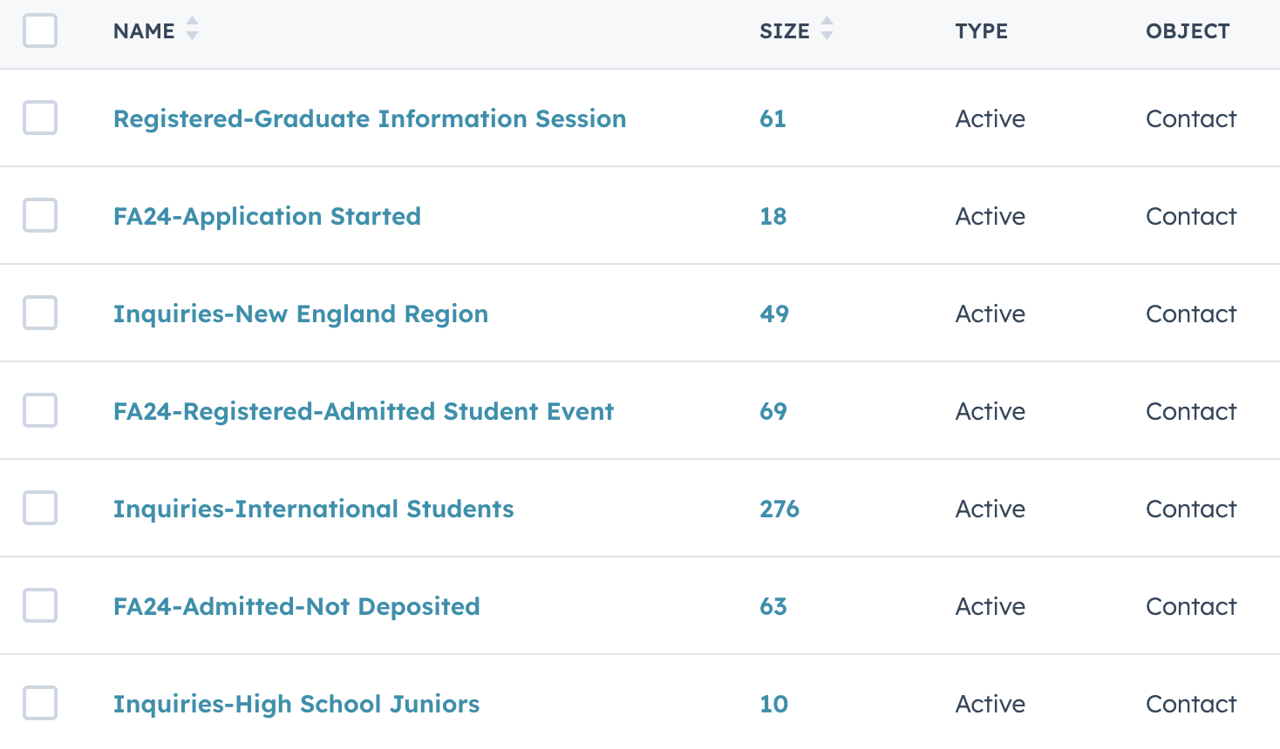
3. Add Personalization Tools
Personalization—using a contact's data to customize your email messaging—is key to engaging prospective and current students. Adding this personal touch to emails, such as the student's name or program of interest is a great way to engage them.
For admissions and university marketing emails, be sure to collect information about your prospective and current students as they interact with your website, such as first and last name, grade level, and program of interest or declared major. Depending on the email marketing platform you use, personalization tokens can be used to automatically populate your emails with this information.
Examples of how to personalize emails for prospective and current students include:
- Adding the recipient's first name in the subject line or greeting section
- Sending content relevant to a student's program of interest or stage in the application process
- Ending emails with a personal signature, such as the contact owner
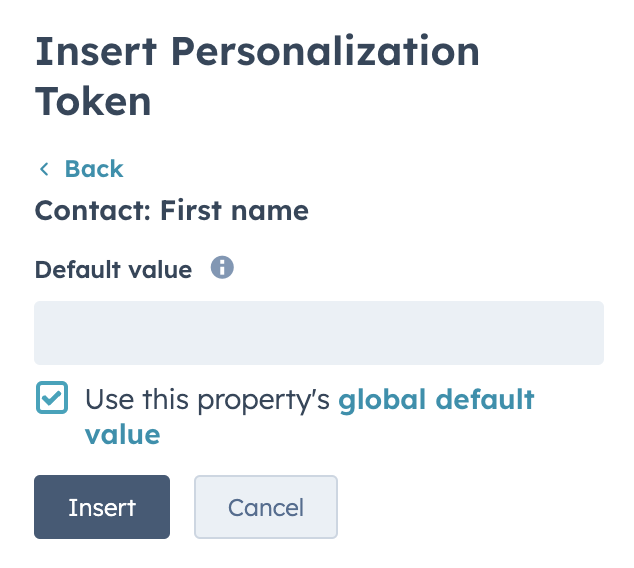

Segmentation is key to personalization, since it helps you determine which messaging is most appropriate for each group of students.
4. Design Email Templates
Email templates are pre-designed layouts that follow your brand's guidelines and establish consistent formatting for your emails. These templates can save you time and effort, and ensure that your emails are immediately recognizable when they're opened.
Most email marketing services, such as HubSpot, provide high-quality email templates that can be modified to fit your university's brand.
Some of the benefits of using templates include:
- Efficiency: Saves your team time by eliminating the need to build and design emails from scratch
- Personalized content: Allows you to customize each email using personalization tokens
- Brand recognition: Consistently incorporates your university logo, colors, and fonts to increase brand recognition and awareness
- Improved communication: Gives writers the ability to focus on the email's content rather than the design, resulting in better communication
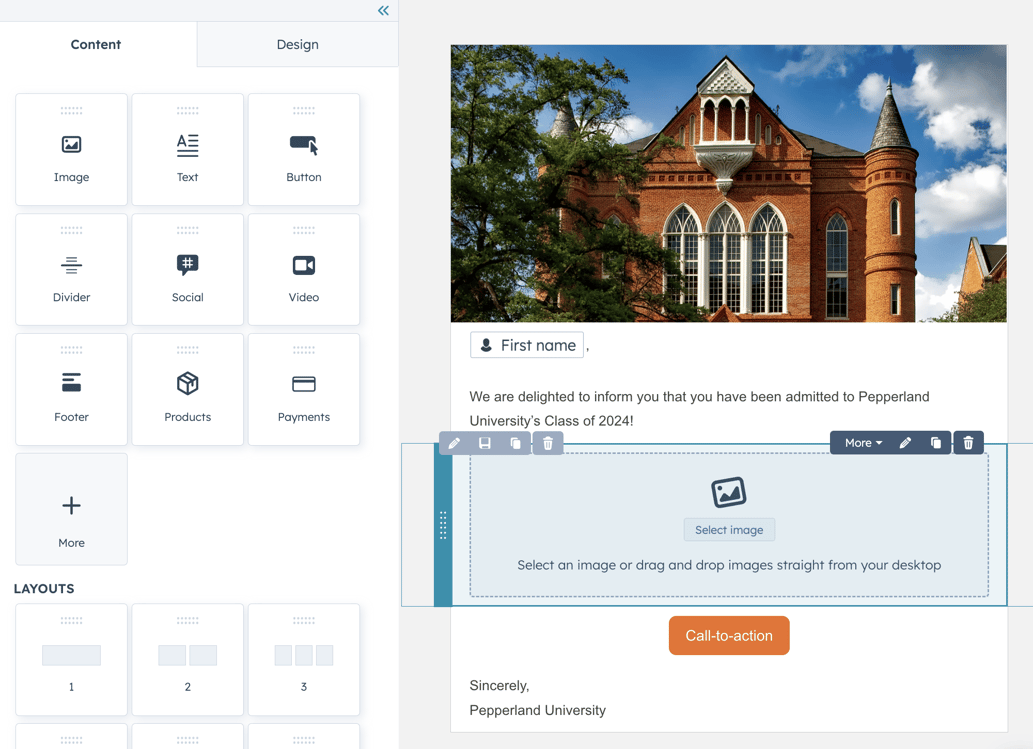
5. Incorporate Automation
Email automation can save countless hours of your time. It allows you to reach the right people at the right time, with information that's relevant to them. It also allows you to automatically segment contacts into your lists based on their interactions with your institution's website, and enroll them in a workflow that engages them and provides contextual and personalized information.
Two of the most common types of email automation include:
- Autoresponders: Automatic email replies sent after a user performs a specific action; for example, a prospective student completes a form to download a content offer.
- Workflows: A series of automated emails that are sent based on a user's specific behavior or collected data. The two components of workflows are the enrollment criteria—the action that qualifies a user to enroll in the workflow—and the goal—the action a user should take while enrolled in the workflow. For admissions, this goal is often for a student to submit an application.
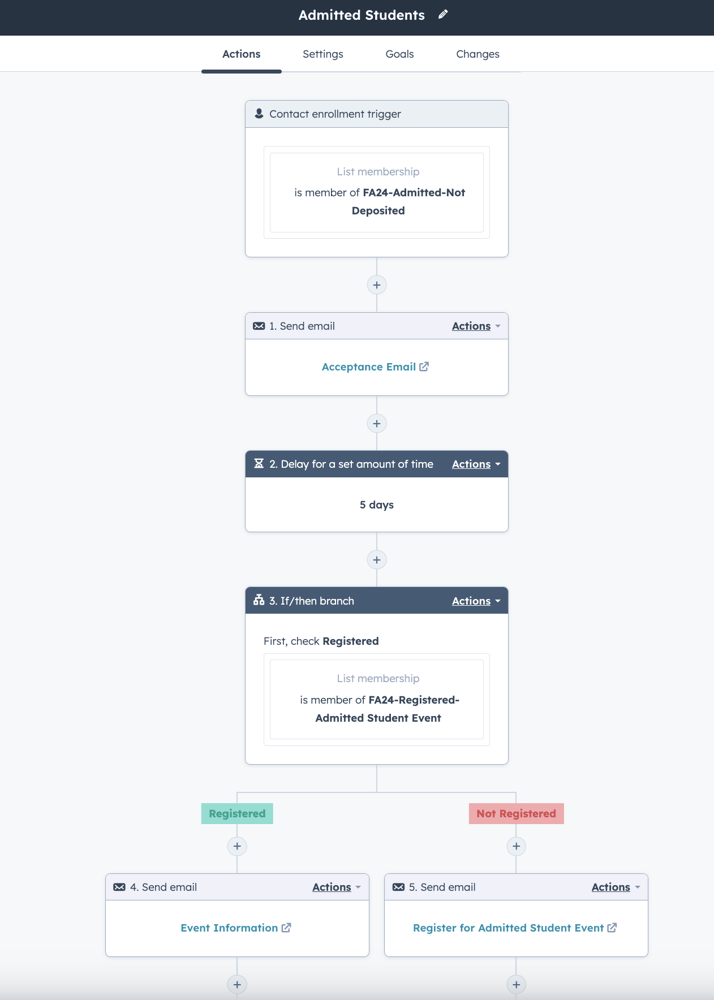
6. Evaluate Your Email Performance
When you've finally set up your email marketing campaign, it's important to consistently monitor and revise it. Analyzing your email marketing performance can lead to better decision-making and determine what will lead your university to long-term enrollment success.
When developing an email campaign, it's important to identify and monitor Key Performance Indicators (KPIs)—quantifiable metrics used to measure your campaign's success—so you can ensure that your campaign is performing as effectively as possible.
Some examples of email marketing KPIs include:
- Bounce rate
- Open rate
- Click-through rate (CTR)
- Conversion rate
- Unsubscribe rate
- ROI
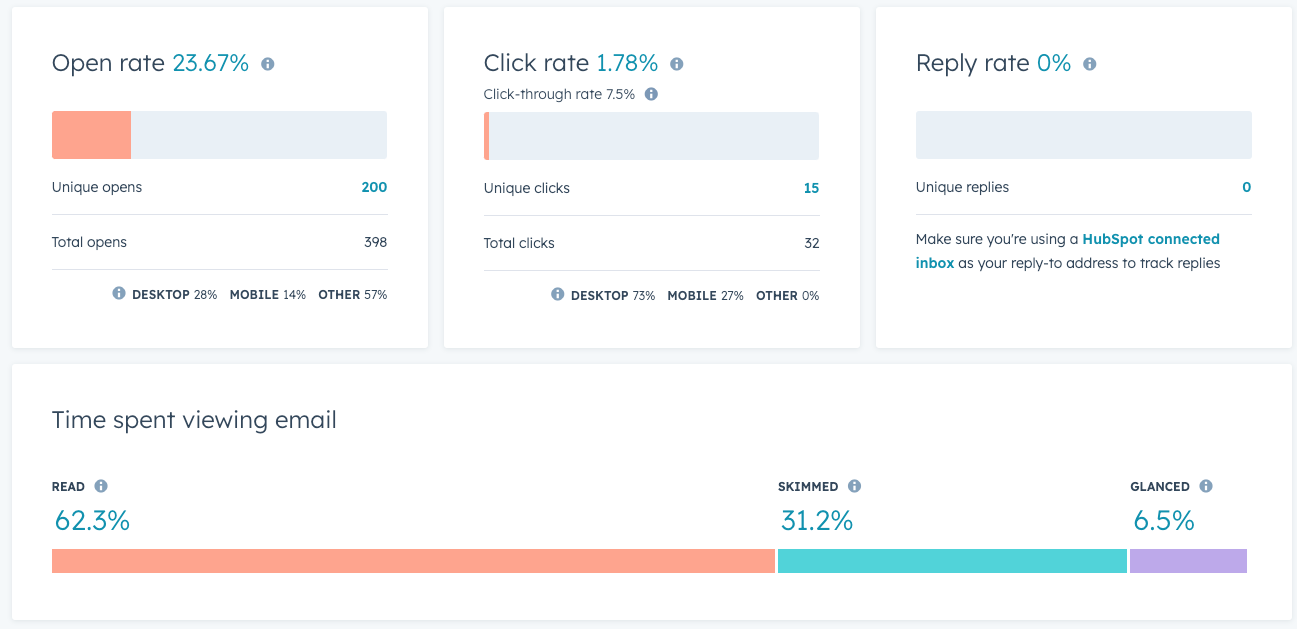
Email marketing software like HubSpot can help universities’ marketing and admissions teams measure email performance and build custom reports to track progress toward their enrollment goals.
Ready to Start Strategizing Your Email Marketing Campaigns?
An effective email marketing strategy can help your college or university increase your enrollment and student engagement alike. As you begin crafting and sending emails, you'll learn what does and doesn't work for you. If you continue to monitor your performance, and provide personalized communication, you'll figure out how best to engage prospective students and attract them to your institution.
If you'd like to learn more about how HubSpot can benefit your email and other enrollment marketing endeavors, we invite you to request a free consultation with us so we can help you discover whether it's the right fit for your institution's goals.
Interested in learning more about enrollment marketing in the higher education world? Sign up for our newsletter for weekly updates and relevant content to help guide your institution to success.







